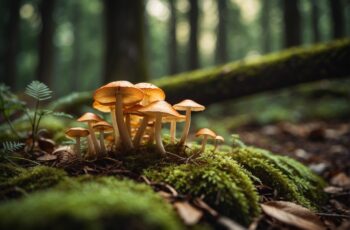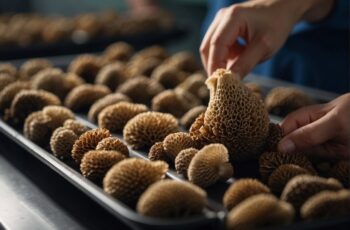Indiana boasts a striking diversity of mushrooms, ranging from the famed morels to the colorful chanterelles. The state offers prime mushroom hunting grounds due to its mixed hardwood forests and fluctuating Midwestern climate. Whether you’re a seasoned forager or simply curious about the world of fungi, learning about the varieties of mushrooms found in Indiana can enhance your appreciation for nature’s intricate ecosystems and even provide a source of natural, wild food.
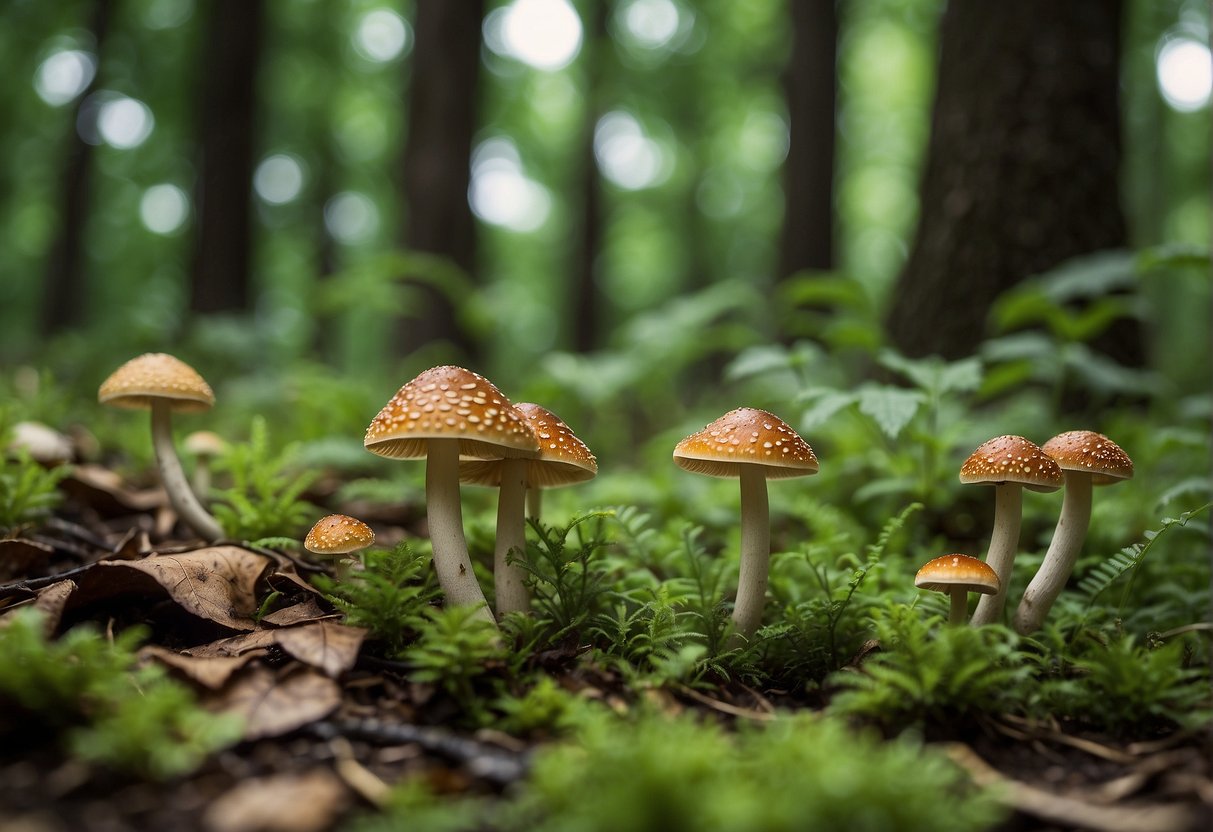
Navigating the forests and meadows of Indiana with an eye for mushrooms requires a basic understanding of their habitats and growth patterns. While some species, like the morel, emerge in the spring, others span across different seasons offering a year-round foraging experience. With the pleasure of discovery, however, comes the responsibility to differentiate between the edible treasures and their poisonous lookalikes.
Key Takeaways
- Indiana’s diverse habitats are home to a variety of mushrooms, including sought-after species like morels and chanterelles.
- Mushroom foraging can be a rewarding outdoor activity, but it’s important to learn proper identification techniques.
- Understanding the difference between edible and toxic mushrooms is crucial for foraging safely.
Overview of Indiana Mushrooms
Indiana’s forests and fields are ripe with a wide array of mushrooms, showcasing the region’s rich biodiversity. As you explore the natural landscapes of the Hoosier State, you’ll encounter various fungi that contribute to the ecological balance and can provide an exciting challenge for mushroom enthusiasts.
Here’s a glimpse into mushrooms in Indiana:
- Morels: Highly coveted, these fungi emerge in the spring. They’re best identified by their unique honeycomb-like appearance. Morels are favorites for their outstanding flavor, but ensure you’re certain of their identity; false morels can be harmful.
- Oyster Mushrooms: These are a year-round resident on dead trees, offering a subtle flavor that’s versatile in the kitchen.
- Chanterelles: Spot these golden treasures in mixed hardwood forests, typically in summer and fall.
Habitats to Explore:
- Decaying Wood: A hotspot for mushroom types like the oyster.
- Mixed Hardwood Forests: Keep an eye out for chanterelles during the warmer months.
As a part of Northeast North America’s ecosystem, the fungal diversity in Indiana adds depth to the state’s natural heritage. Remember that some mushrooms in the wild can be toxic, so never consume any wild mushroom unless you’re absolutely sure of its safety. It’s wise to familiarize yourself with the local varieties using resources such as Indiana Mushrooms, Identification and Photographs to make your foraging experience both safe and rewarding. When in doubt, consult an expert or a local mycological society to help with identification.
Whether you’re a seasoned mycophile or a curious outdoorsman, Indiana’s mushrooms offer an engaging opportunity to connect with nature. Keep your eyes peeled and your identification guides ready as you delve into Indiana’s fungal wonders.
Habitats and Biodiversity
Indiana’s diverse ecosystems offer you a plethora of habitats that foster a rich variety of fungi. As you explore the state’s natural beauty, you’ll discover that each habitat supports distinct fungal forms.
Hardwood Forests
In the hardwood forests of Indiana, especially prevalent in south-central Indiana, you’re likely to encounter an impressive range of mushrooms nestled among the leaf litter. These habitats are prime real estate for fungi due to the abundance of decaying wood that fuels their growth.
- Oyster Mushrooms: Flourish on decaying wood, logs, and stumps.
- Chanterelle: Found under the canopy of mixed hardwood forests, particularly in the summer and fall.
For comprehensive identification and specifics on the species you might come across in these environments, a visit to Indiana Mushrooms, Identification and Photographs can offer valuable insights.
Meadows and Fields
Venture outside the woods into the meadows and fields of the Hoosier State, and you’ll discover that these open habitats are anything but barren when it comes to fungal biodiversity. Grasslands and fields are a canvas where mushrooms add splashes of color and life.
- Puffballs: Often dot these landscapes, emerging from the soil after rain.
- Earthstars: May surprise you with their unique shape against the grassy backdrop.
Take a closer look at the habitats that surround you and notice the small complexities they support.
Urban and Suburban Areas
Even in urban and suburban areas, your keen eye can spot fungi thriving. These versatile organisms have adapted to life close to humans, making use of mulch, parklands, and even landscaped areas to sustain themselves.
- Ink Caps: Common in lawns and wood chips, these mushrooms can appear overnight.
- Shelf Mushrooms: Cling to the sides of trees in parks and neighborhood greenspaces.
To further aid your urban mushroom hunting, consider browsing through Indiana Fungi where vibrant photographs highlight the identifying characteristics of local varieties.
Foraging and Identification
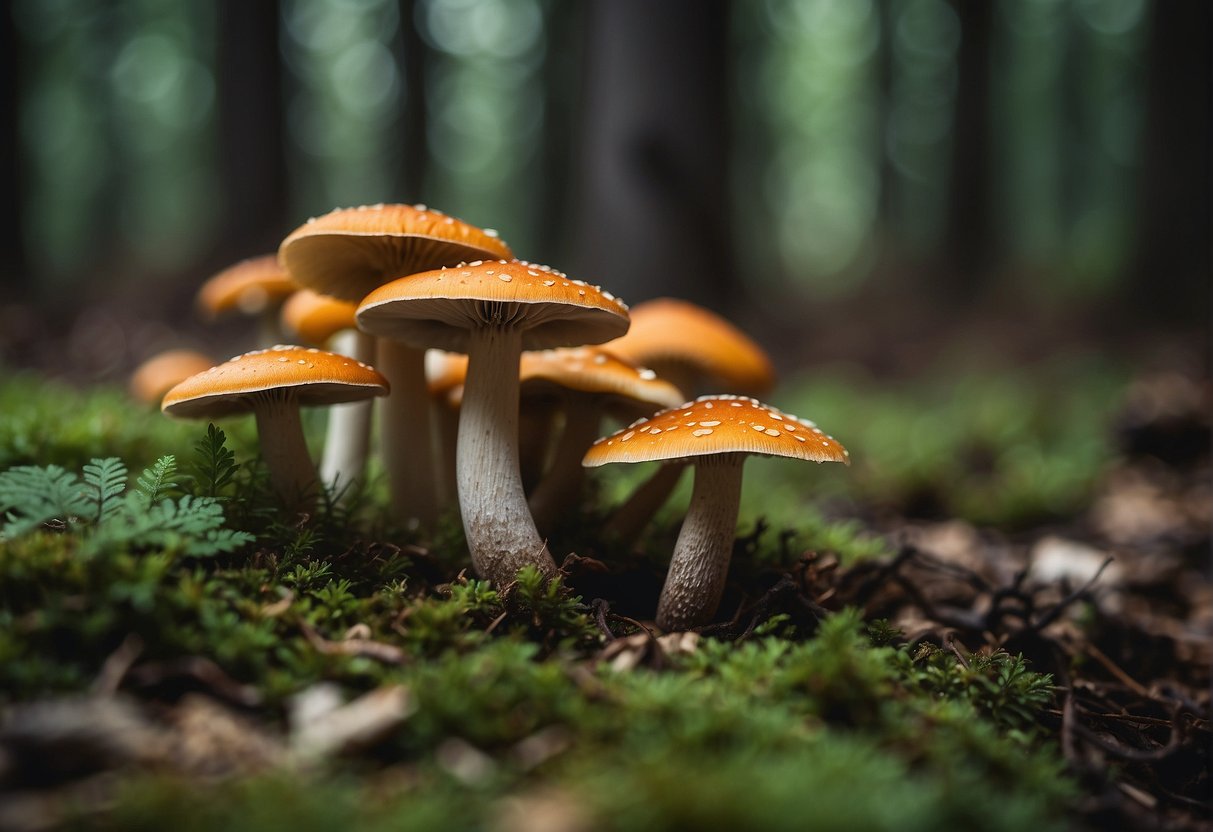
As you set out on your mushroom foraging adventures in Indiana, understanding safe practices and the identifying characteristics of mushrooms is crucial. With proper knowledge, you’ll be able to confidently identify and collect mushrooms that are safe to eat.
Safe Practices
Before you start foraging:
- Obtain permission to forage on private land.
- Always forage with a guidebook or a knowledgeable companion.
- Familiarize yourself with local regulations and protected species.
While you’re out:
- Bring a basket or breathable bag to prevent mold and spore suffocation.
- Use a knife to cut mushrooms; this helps preserve the mycelium for future growth.
Identifying Characteristics
Mushrooms have various features that are key to their identification:
- Cap Shape: May be conical, flat, bell-shaped, among others.
- Color: Varies widely; note any color changes with age.
- Size: Measure both cap and stem.
- Gills: Check the color, attachment to stem, and spacing.
- Stem: Note thickness, texture, and presence of a ring.
- Habitat: Some species are only found in specific environments.
Mushroom spore prints, a technique involving placing the mushroom cap on paper to capture the color and pattern of spores, are an essential part of mushroom identification.
Mushroom Identification Tips
- Start with common, easily distinguishable mushrooms before trying to identify more challenging species.
- Cross-reference multiple features with a reputable guide or database, such as the one found at Indiana Mushrooms, for accurate identification.
- When unsure, err on the side of caution; never consume a mushroom unless you are 100% certain of its identity.
- Consider joining local mushroom hunting or foraging groups to gain insights and tips from experienced foragers.
Edible and Poisonous Species
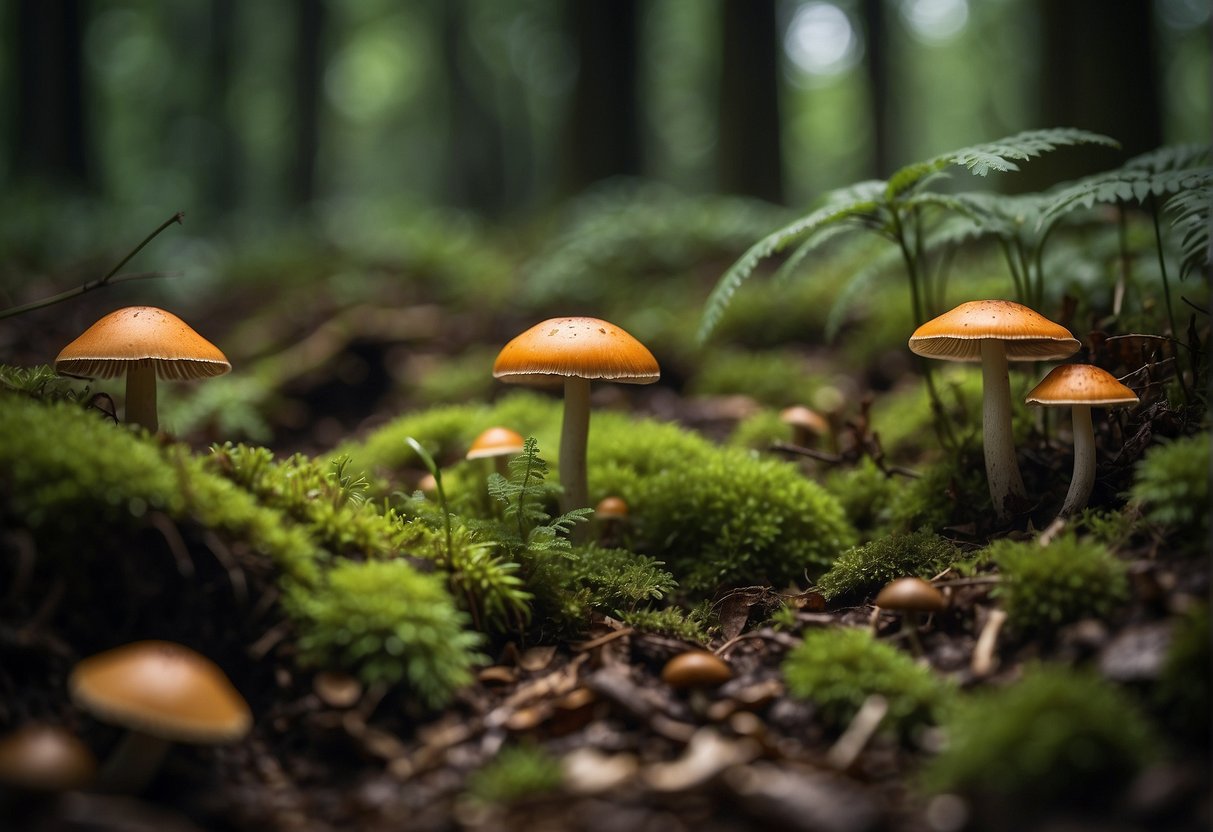
Indiana is a bountiful region for mushroom enthusiasts, but it’s crucial to distinguish between delicious edibles and dangerous species that may appear quite similar. Your safety depends on proper identification.
Common Edible Mushrooms
Indiana’s woods are home to several edible mushrooms that are not only safe to eat but also highly sought after. Morel mushrooms emerge in spring and are a favorite for their unique honeycomb texture and nutty flavor. Similarly, chanterelle mushrooms are known for their fruity aroma and are typically found in mossy hardwood forests. Oyster mushrooms, growing on the sides of trees, are easily identifiable by their oyster-shaped caps and are popular for their delicate texture.
- Morel Mushrooms: Hollow, honeycombed cap; found in spring under hardwood trees.
- Chanterelle Mushrooms: Yellow to orange, trumpet-shaped; with a fruity scent.
- Oyster Mushrooms: Oyster-shaped, growing in shelf-like clusters on dead or dying trees.
Remember to always have a field guide or use resources like Indiana Mushrooms, Identification and Photographs for accurate identification before consumption.
Dangerous Lookalikes
Indiana’s forests harbor lookalikes that can easily be mistaken for edible species. The jack o’lantern mushroom resembles chanterelles, yet it is toxic and bioluminescent. False morels can be difficult to distinguish from true morels, but consuming them can be fatal. It’s especially important to be aware of these mimics during your foraging explorations.
- Jack o’ Lantern Mushroom: Often confused with chanterelles; emits a greenish glow in the dark.
- False Morels: Similar to morels but with a wrinkled and irregular cap structure.
Toxic Species to Avoid
Several poisonous mushrooms in Indiana require your vigilance. The destroying angel and death cap mushrooms contain deadly toxins that can cause severe poisoning. The vibrant fly agaric (Amanita muscaria) is iconic but psychoactive and potentially dangerous. The deadly galerina mushroom is another toxic species often found on wood or in moss. Always err on the side of caution and avoid mushrooms you cannot positively identify.
- Destroying Angel (Amanitaceae family): Pure white and elegant, it’s as deadly as it is beautiful.
- Death Cap (Amanita phalloides): Resembles some edible species; causes liver and kidney failure.
- Fly Agaric (Amanita muscaria): Red with white spots, it’s famous in folklore but hazardous.

